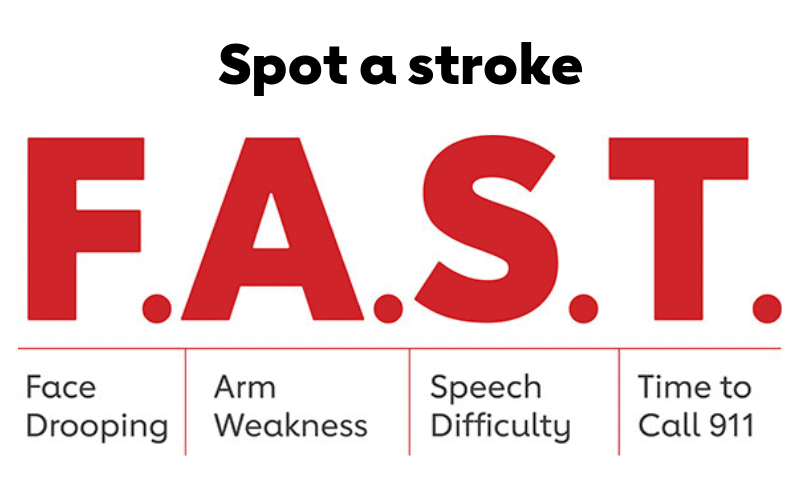
American Stroke Month
Someone in the United States has a stroke every 40 seconds. May is American Stroke Month and the American Heart Association is encouraging people to learn the signs of a stroke and to act fast when they appear.
Each year, almost 800,000 people have a stroke. Knowing how to recognize a stroke emergency is key to getting life-saving medical attention when every minute matters. Use the acronym F.A.S.T. to remember the most common signs of stroke:
•Face Drooping – Does one side of the face droop or is it numb? Ask the person to smile. Is the person’s smile uneven?
•Arm Weakness – Is one arm weak or numb? Ask the person to raise both arms. Does one arm drift downward?
•Speech Difficulty – Is speech slurred? Is the person unable to speak or hard to understand? Ask the person to repeat a simple sentence, like “The sky is blue.”
•Time to Call 9-1-1 – If someone shows any of these symptoms, even if the symptoms go away, call 9-1-1 and get to a hospital immediately. (Tip: Check the time so you’ll know when the first symptoms appeared.)
Stroke is the No. 5 cause of death in the United States, killing more than 140,000 people a year. That’s 1 in every 19 deaths. Stroke is also a leading cause of long-term disability and the leading preventable cause of disability.
Stroke occurs when blood flow to the brain is interrupted. Without oxygen-rich blood, brain cells die. About 2 million brains cells die per minute during a stroke emergency. Eighty-seven percent of strokes are classified as ischemic. An ischemic stroke occurs when a clot or a mass blocks a blood vessel, cutting off blood flow to a part of the brain. A hemorrhagic stroke occurs when a weakened blood vessel, or cerebral aneurism, ruptures, spilling blood into the brain. Like ischemic stroke, a major cause of hemorrhagic stroke is uncontrolled hypertension.
Not all strokes can be prevented, but up to 80 percent may be prevented by not smoking, making healthy food choices, getting enough physical activity, maintaining a healthy weight and treating conditions such as high blood sugar, high cholesterol and high blood pressure. Even if you have a condition that puts you at high risk like uncontrolled high blood pressure or diabetes, you may reduce your risk with the healthy choices you make each day. Be kind to your body and speak with your doctor about how you can reduce your risk of stroke so you can spend more precious time with the people you can’t bear to live without. To learn more, visit stroke.org.